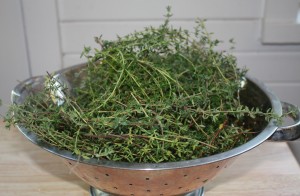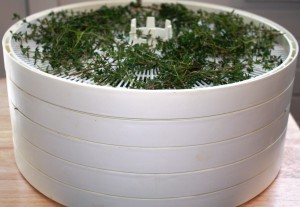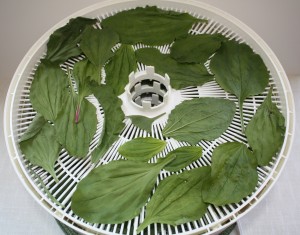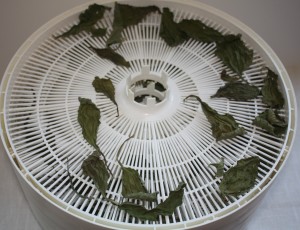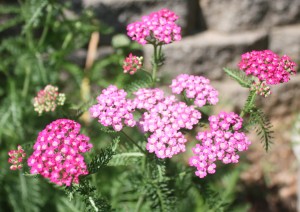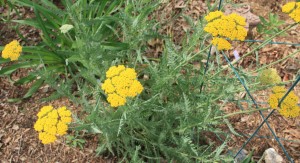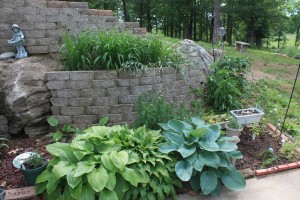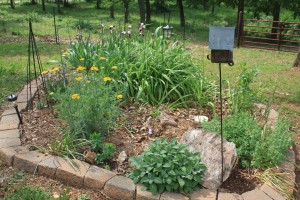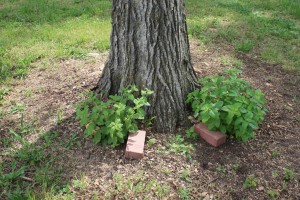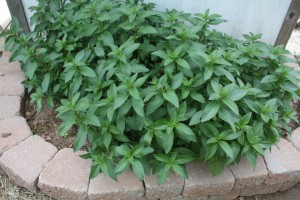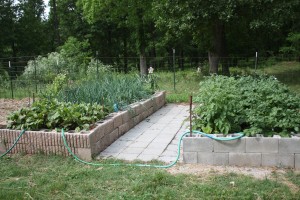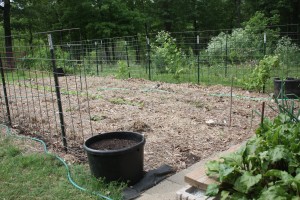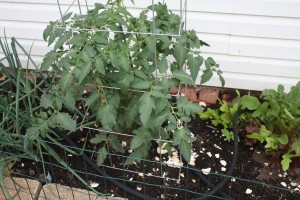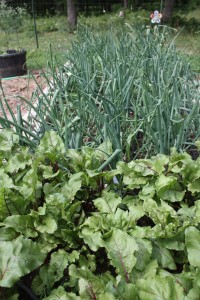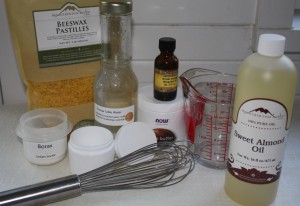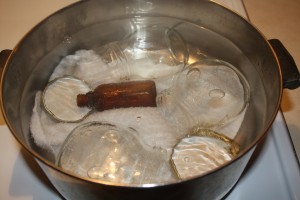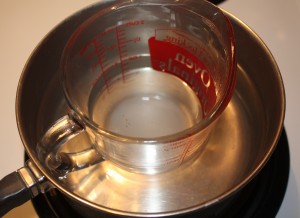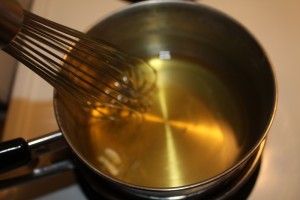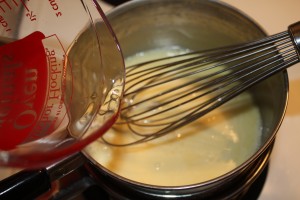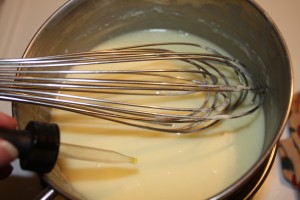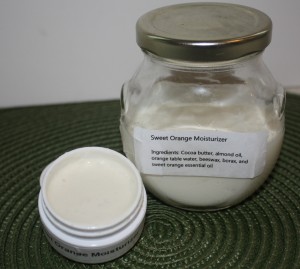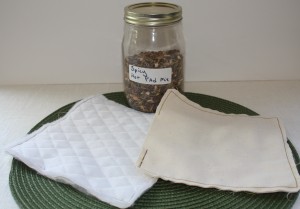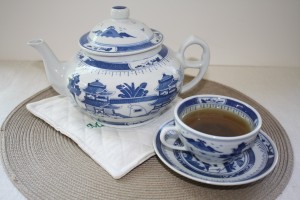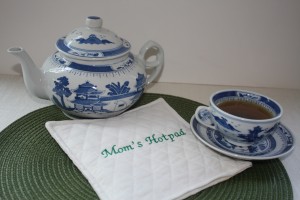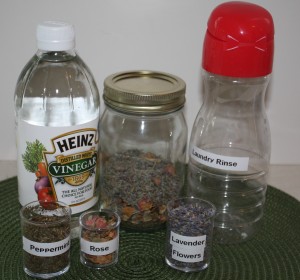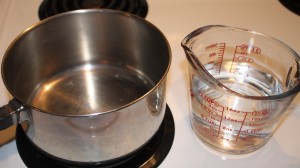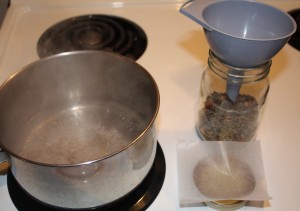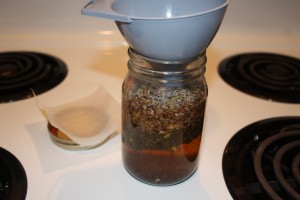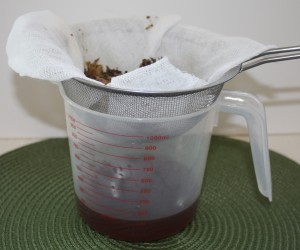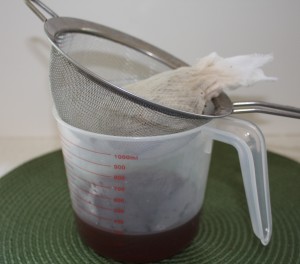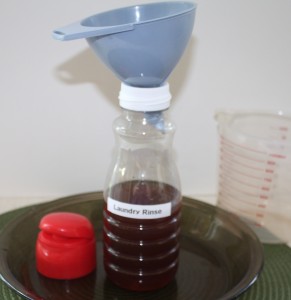Harvesting and Drying Fresh Herbs and Flowers is an easy way to extend the harvest of your herbs and flowers. Basically it is providing an environment for your herbs to remove the excess water and easy to store for future use. The herbs should be dried in a way that allows the herb to retains its flavor, fragrances, and shapes as much as possible.
Several methods can be used to preserve the herbs which include:
- Drying using a food dehydrator
- Drying in the refrigerator
- Air drying
- Hanging to dry
- Drying using the microwave
- Drying use the oven
- Freezing the herbs
- Making herbal vinegars
- Freezing in oil
When to Cut: Cut the herbs just before flowering on warm, dry morning after the dew has dried and the sun has warmed the herbs which help to bring the essential oils to the top but before they began to evaporate.
It is best to stick to one variety at a time to keep the flavors from mixing and well– keep it organized. Almost every herb can be dried but some herbs have better flavor if frozen. This blog will give you lots of advice on which herbs to dry and which to freeze, but sometimes it takes experimentation. Drying herbs will react in different ways in different parts of the country. In humid areas it takes longer for the herbs to dry and in dry areas the drying time will be shorter but may result in unattractive herbs.
Some herbs will change their color dramatically, or their shape while others will retain their original color and/or shape. Keeping an accurate notebook will help the harvest in the following seasons. Notes should include the date, weather conditions, the harvest methods and the results.
Start with harvesting the herbs. If the herb has a small leaves such as thyme or marjoram, the stems and leaves should be left intact. With medium to large leaves, I cut the stems and place gently in a gathering basket or tub and as I pick over the leaves, I cut them away from any thick stems, depending on your drying method.
The herbs can be cut back about once a month. Perennials should only be cut back about a third, and annuals can be cut back about half and cut back completely at the end of the season. The last cutting should allow the perennials to recover before the winter.
Avoid picking damage leaves or leaves chew up by insects, avoid leaves with powdery mildew or mold. Be sure and pick more than you expect using, the herb will shrink.
Washing: There are two schools of thought when it comes to washing your herbs before drying. Some books say don’t wash, other say do wash. I always wash, because I see what is left in my tub when I am through washing. Herbs with small leaves leave on the stem for drying.
I use two clear tubs and wash from one tub to the other until the water runs clean. As I wash I pick over the leaves, cut off large leaves from the stems and check for any foreign objects.
I always wash the herbs the same whether I am using them as culinary, medical or crafts. I like to know I can use them however I want without worrying about how they were cleaned.
Dehydrator Drying: Place the herbs in a colander and allow airing dry for a couple of hours. Once most of the water has been removed I place the leaves in a single layer in a food dehydrator with a temperature setting between 90° and 110° F. To maximize the essential oils in the herbs, they should not be dried above 110° F. Allow the leaves to dry until crispy and store in a glass jar with tight fitting lid. I have been using my dehydrator for many years and it is my favorite method.
Check after a couple of days to make sure there is no condensations in the jar, if it has only been a couple of days re-dry and if it has been longer, start over.
The next two pictures show a rack before drying and after drying.
Air-Hang Drying: For smaller plants, gather a few sprigs together about 6 to 8” long and place inside of a brown paper bag that holes have been cut into to allow air drying. Gather the stems together and tie the bag close with a rubber band, catching the stems with the rubber band.
Hang the bag either on a metal clothes hanger or hook and hang up to dry in a cool, well ventilated area. It may take about 2 weeks. Check every couple of days for crispness and to turn the sack around.Once dry place the jar in a dark cupboard to retain freshness. Use within one year.
Herbs with larger leaves can be hung to dry but they take a lot of room and a large grocery paper bag. For years herbs were hung in the rafters, but most people leave them too long and they become dusty and unusable. Herbs such as bronze fennel look wonderful hanging in the rafters but this is used mostly as decoration.
Air-drying: Lay the single layer of herbs flat on either a plastic tray with holes in the tray (such as those sometimes used as nurseries) or flat baskets or screens. Place these trays on rack used for drying clothes or on shelves with circulation all around. Check every day and once dry place in jars.
Try not to crush the herbs until they are ready to use, because the essential oils and aroma are release when crushed. The inside of your jar does not need the flavor of the herb, your food or medicine does.
Check out part two for information on Harvesting and drying fresh herbs and flowers for drying seeds, flowers, roots and other methods of drying and harvesting herbs.

